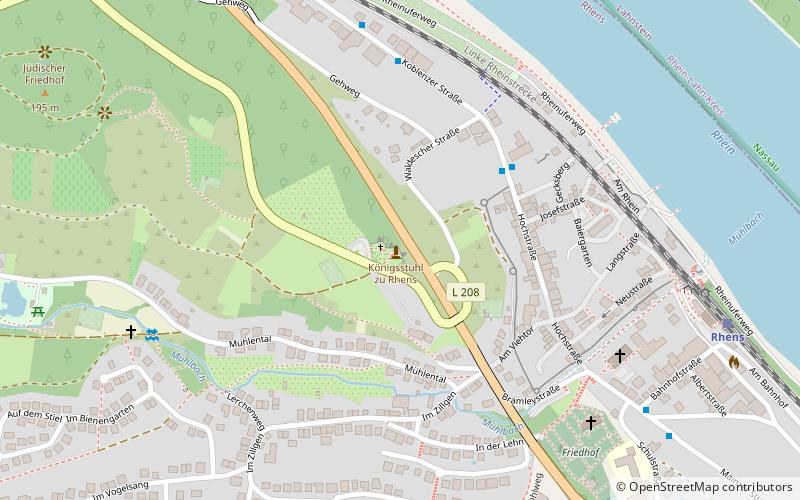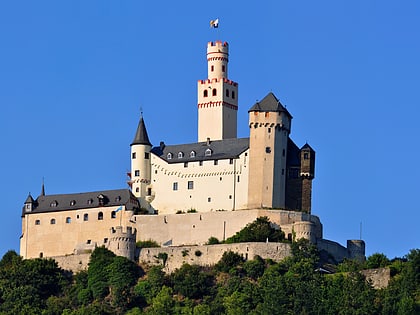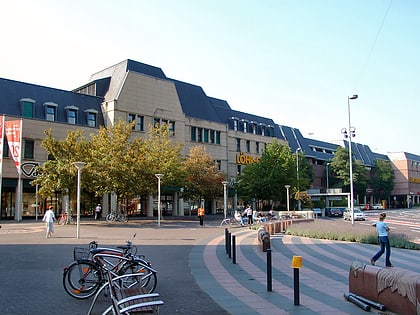Königsstuhl zu Rhens, Rhens


Facts and practical information
The royal throne in Rhens - a stone, two -story octagonal structure with a throne shape at the place of the nut orchard in Rhens south of Koblencja, at which elector meetings were often held in the Middle Ages. The current building was erected in 1842 on the site of the original destroyed in 1795.
The royal throne probably corresponds to the former wooden building. The current octagonal building consists of a platform supported on eight pillars, on which 17 stairs lead. The throne was built of volcanic lava and basalt.
In 1273, a meeting of four electors took place for the first time in the nutty orchard on the banks of the Rhine before choosing Rudolf from Habsburg. It was organized in a place where the borders of four electorates coincided. Further councils took place before the election of Henry VII and Ludwik Bavarski, respectively in 1308 and 1313/1314, respectively. In 1338 the Congress of Electors met.
In 1346, Charles IV was chosen in Rhens for the German anti -corner. In 1376 a meeting was held here before the election of the German king Wacław IV, son of Charles IV. The very election of the Golden Bull of Charles IV took place in Frankfurt am Main on June 10, 1376. A few days later on July 9, 1376, Karol IV ordered "Steynen Gestuel", on which the electors were to indicate the future king.
The throne had to build the townspeople from Rhens. To cover the construction and maintenance costs, the emperor granted them a customs privilege.
In 1398 the throne was probably mentioned for the first time in connection with Wacław IV's visit to Rhens. After the dethronization of Wacław in 1,400, a ruprecht from Palatinate was planted on it. After the death of Ruprecht, the throne lost its meaning as a place of meeting and elections, but in 1433 Frederick III sat on him, who at the time took an oath of the Reich and was fitted with a knight. While traveling from Frankfurt to Aachen, Maksymilian I entered the throne.
According to other sources, Ruprecht from Palatinate was the first and last king who was elected in Rhens, because then Frankfurt was the place of choosing the monarch. The construction of the throne by Karol IV, as a place of meetings preparing an election, is considered a kind of compensation for the former election field. Successive kings and emperors visited this place on their way to coronation to Aachen. They entered the throne to take an oath and present themselves to the people. This custom has disappeared around 1550.
The throne was restored in 1624 on the command of Landgraf Jerzy II of Hesja-Darmstadt. In the following years, however, he slowly fell into ruin. In 1795 French soldiers sold it for building material to the inhabitants of Rhens. In 1806 the building was completely demolished. In 1826, Karl Bernhard Hundeshagen designed a New Year plaque with a relief depicting the throne. Soon the fundraiser of money began, which was supported by King Frederick Wilhelm IV. In the years 1841–1843 the builder Johann Claudius von Lassaulx erected a new throne. In 1848 a manifestation took place on the occasion of the convening of the Frankfurt Parliament.
In 1929 the throne was moved to the current place on the Schawall hill near the national road B9. A commemorative plaque was placed in the old place. The building was renovated in 1979–1982. Since 2002, the throne is part of the cultural landscape "Oberes Mittelrheintal", inscribed on the UNESCO World Heritage List.
For many years there was a ceremony at the throne, during which the mayor of Koblencia received an official chain. Mayors of Koblencja and Rhens meet from Pentecost 1978.
Rhens
Königsstuhl zu Rhens – popular in the area (distance from the attraction)
Nearby attractions include: Marksburg, Schloss Stolzenfels, Löhr-Center, German Federal Archives.











